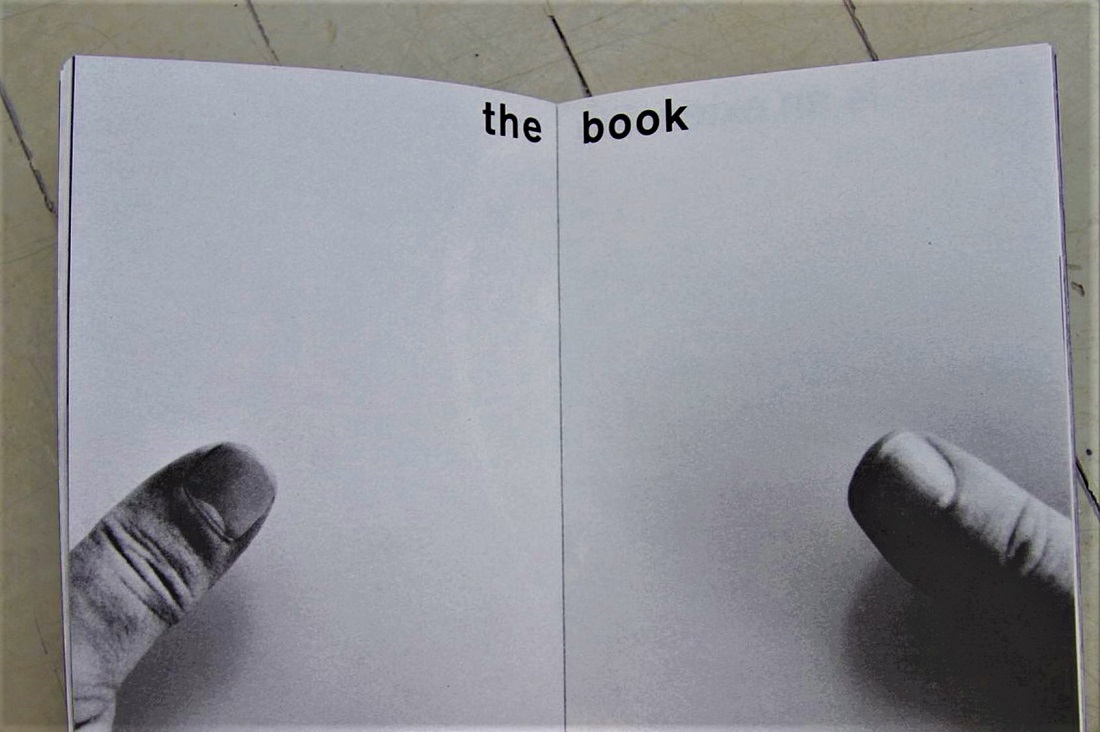When WIRED magazine christened the Canadian media guru Marshall McLuhan its “patron saint” on the original masthead in 1992, it seemed like a fitting honor. After all, the new tech culture magazine was the self-proclaimed authority on where the world was headed in the digital age. So tagging McLuhan, the late English professor turned media philosopher, added some prophetic pomp. His popular slogans like “the medium is the message” sounded like Zen koans written by an ad man, perfect for a Silicon Valley culture fixated on spreading the gospel of techno-utopianism.
Here is something you will not find in WIRED magazine: "In Jesus Christ, there is no distance or separation between the medium and the message: it is the one case where we can say that the medium and the message are fully one and the same."[1] A theological take on “the medium is the message.” This is also McLuhan.
Whether McLuhan coined his famous phrase while looking at a television or a crucifix is of little importance. What is interesting is how McLuhan applied his deeply Catholic imagination to understanding media. The rangy professor with a penchant for the prophetic was running on a different operating system than the secular elites of Silicon Valley.
McLuhan may not have been the patron saint WIRED was looking for; rather, he was a techno-heretic in electric sheep’s clothing. A scholar of James Joyce, McLuhan wrote in a style reminiscent of Joycean satire, skewering the advertisers and technologists who so admired his style. McLuhan was not unlike the protagonist in Joyce’s “The Holy Office”:
But all these men of whom I speak
Make me a sewer of their clique.
That they may dream their dreamy dreams
I carry off their filthy streams...
Thus I relieve their timid arses,
Perform my office of Katharsis.
My scarlet leaves them white as wool
Through me they purge a bellyful.[2]
McLuhan hovered at a vantage point from which he could see clearly the naive romanticism and insularity of the media “professionals” who leaned on his work for justification.
In one breath McLuhan called advertising “the greatest art form of the 20th century” and in the next, “a vast, military operation to conquer the human spirit.” To try and pin down McLuhan would be a mistake. He was neither an optimist nor pessimist when it came to understanding our hyper-mediated environment. By his own description, he was only “apocalyptic.”
In a letter to Jacques Maritain, McLuhan wrote the following:
Electric information environments being utterly ethereal fosters the illusion of the world as a spiritual substance. It is now a reasonable facsimile of the mystical body, a blatant manifestation of the Anti-Christ.[3]
Maritain responded by agreeing that the rapidity of change did not allow time for adaptation and that the technological revolution was producing “grave” troubles for some Catholics. In an interview with Pierre Babin, McLuhan expanded his metaphysical view of media:
Just think: each person can instantly be tuned to a “new Christ” and mistake him for the real Christ. At such times it becomes crucial to hear properly and to tune yourself in to the right frequency.[4]
McLuhan’s apocalyptic view was not negative. As he explained it, “Apocalypse is not gloom. It’s salvation. No Christian could ever be an optimist or a pessimist: that’s a purely secular state of mind.”[5] Privately, he wondered if the new media environment might even usher in a “religious Renaissance.”[6]
The 1960’s were not a particularly friendly time for Catholic intellectuals of any stripe who sought to integrate the Church’s intellectual tradition with that of the social sciences. The academic tide had turned toward a more secular and critical approach to the disciplines. In his public appearances, McLuhan often veiled his religious commitments so as not to be outed. In a famous debate with the novelist Norman Mailer on Canadian public television, McLuhan tried to explain how the technology of the satellite had turned Nature into content. No longer something external and out of our control, Nature was now a work of art, visible in its totality from the outside and above, completely programmable.
What the Canadian viewers did not hear or see were the notes scratched on a folded sheet of paper, tucked away in an obscure academic journal called Alphabet, where a year prior to the interview, McLuhan scribbled the following note, “[the satellite] Invites us to recall an earlier satellite that announced the re-programming of Nature: The star of Beth[lehem]: The Incarn[ation] as a new medium conveyed a new message.”[7] While not ready for prime time, McLuhan’s thought clearly orbited around his commitment to the supernatural reality that undergirds our various virtual realities.
McLuhan recognized 50 years ago, well before the addictive algorithms of social media and smartphones, that man was being re-programmed by his technologies. Not in a nefarious science fiction sort of way where the technology has a mind of its own, but precisely because technology is always and everywhere an extension of our very selves. And when we extend our selves in any form we become utterly fascinated with what we have produced, because it is us, but in a more potent form.
The disordered libido dominandi in which man is festooned with hypnotic prostheses is only tempered by a proper understanding of man’s nature. It is no wonder that McLuhan often mentioned that his favorite prayer in the Mass came from the Offertory:
O God, who, in creating human nature, didst wonderfully dignify it, and hast still more wonderfully restored it (emphasis added), grant that, by the Mystery of this water and wine, we may become partakers of his divine nature, who deigned to become partaker of our human nature.
Yes, we have been re-programmed, but it is in and through Christ that our nature and identity is restored and secured, not our inventions. Man’s quest for transcendence and salvation has frequently tacked between religious faith and technological deliverance. As David Noble points out in The Religion of Technology, it was part of a Protestant ideal to return the earth to its prelapsarian state through scientific and technological pursuits. McLuhan was hardly a supporter of this view. As he wrote in a letter to his mother Elsie McLuhan:
Catholic culture produced Don Quixote and St. Francis and Rabelais . . . I need scarcely indicate that everything that is especially hateful and devilish and inhuman about the conditions and strain of modern industrial society is not only Protestant in origin, but it is their boast (!) to have originated it.[8]
McLuhan was a convert from his parents’ Protestantism and became a daily communicant. The Eucharist became a keystone of McLuhan’s life and thought. For him, transubstantiation was the ultimate refutation of materialism and gnosticism.[9] It meant that Christ blessed all the senses of the human body, giving us an advantage over the angels. Reflecting on the Gospel of John, McLuhan sharpened his techno-theological view:
This kind of thing is said many times in the Gospel: these people do not belong to my fold, they do not hear. If they hear my voice, it is because the Father let them. In other words, the Father has “programmed them from within to hear Christ.”[10]
When asked what the Catholic faith meant to him, McLuhan simply replied, “prayer and paying attention.”
Where does one acquire the attentiveness to enter so deeply into the mysteries of the faith while simultaneously studying the distracting devices that undo said attention? Recall that McLuhan’s senses were formed well before the rise of television. His work at Cambridge as a student of English literature contains all of the prefigurements that led to his incisive critiques of our mediated society.
A reader of George Herbert’s Anglican poetry, McLuhan likely found a resonance with poems like The Altar where the content of the poem was laid out in the form of an altar resting on its side:
A broken ALTAR, Lord, thy servant rears,
Made of a heart and cemented with tears;
Whose parts are as thy hand did frame;
No workman's tool hath touch'd the same.
A HEART alone
Is such a stone,
As nothing but
Thy pow'r doth cut.
Wherefore each part
Of my hard heart
Meets in this frame
To praise thy name.
That if I chance to hold my peace,
These stones to praise thee may not cease.
Oh, let thy blessed SACRIFICE be mine,
And sanctify this ALTAR to be thine.
The poem playfully hints at the relationship between content and form where medium becomes message in the shape of the words. Following T.S. Eliot, McLuhan felt as though the study of poetry was not just trying to find the meaning of a poem but in diagnosing the effect of the poem on the listener. The meaning or content of the poem was merely “the juicy piece of meat” to distract the watchdog of the mind while the poem did its real work. It was an idea he would carry forward in his diagnosis of media effects in which media forms (rather than content) are most responsible for shaping patterns of thought.
Even more telling is an essay that McLuhan partially copied into the back of a volume of Herbert’s poetry, a reflection on the difference between Herbert and his Catholic convert contemporary Richard Crashaw:
A note is heard which is struck for the [first] time in the 17th century, the accent of the convert to Romanism, the joy of the troubled soul who has found rest and a full expansion of heart in the rediscovery of a ritual and a faith and order which give entire justification to the imagination and the affections.[11]
The seeds of McLuhan’s own conversion were sown during his studies at Cambridge in 1934. Three years later, he would enter the Church of ritual, faith, and order—as he put it, “on his knees.”
Marshall McLuhan’s foray into media studies after a formation in literature was an extension of his fascination with language, our first communications technology. Yet, despite all of his intellectual prowess and erudition, McLuhan never felt his conversion to Catholicism was something that could be reasoned out or justified by concepts. Faith was not a matter of concepts, but precepts, those deeply felt intuitions that come from a radical alignment of the senses, both exterior and interior.
McLuhan’s simple faith was an unassuming but trenchant tool for understanding our complex media environment.
[1] M. McLuhan, E. McLuhan, J. Szlarek, The Medium and the Light: Reflections on Religion (Eugene, OR: Wipf & Stock, 2010), 102.
[2] J. Joyce, James Joyce: The Poems in Verse and Prose (London: Kyle Cathie Limited, 1996), 42.
[3] M. McLuhan, E. McLuhan, J. Szlarek, The Medium and the Light, op. cit., 72.
[4] Coste, review: M. McLuhan, Autre homme, autre chrétien à l'âge électronique (Book Review), Bulletin De Littérature Ecclésiastique (1980): 81, 233.
[5] M. McLuhan, E. McLuhan, J. Szlarek, The Medium and the Light, op. cit., 50.
[6] See: https://inscriptorium.wordpress.com/2011/06/08/did-gutberg-help-to-wed-the-estab-and-the-gospel/, accessed June 28, 2018.
[7] Ibid.
[8] M. McLuhan, E. McLuhan, J. Szlarek, The Medium and the Light, 15.
[9] P. Marchand, Marshall McLuhan: The Medium and the Messenger (New York: Ticknor & Fields, 1989), 52.
[10] See: https://secondnaturejournal.com/passion-and-precision-the-faith-of-marshall-mcluhan/, accessed June 27, 2018.
[11] See: https://inscriptorium.wordpress.com/2011/07/24/the-simple-conclusion-suggests-words-are-utterly-inadequate/, accessed June 27, 2018.


